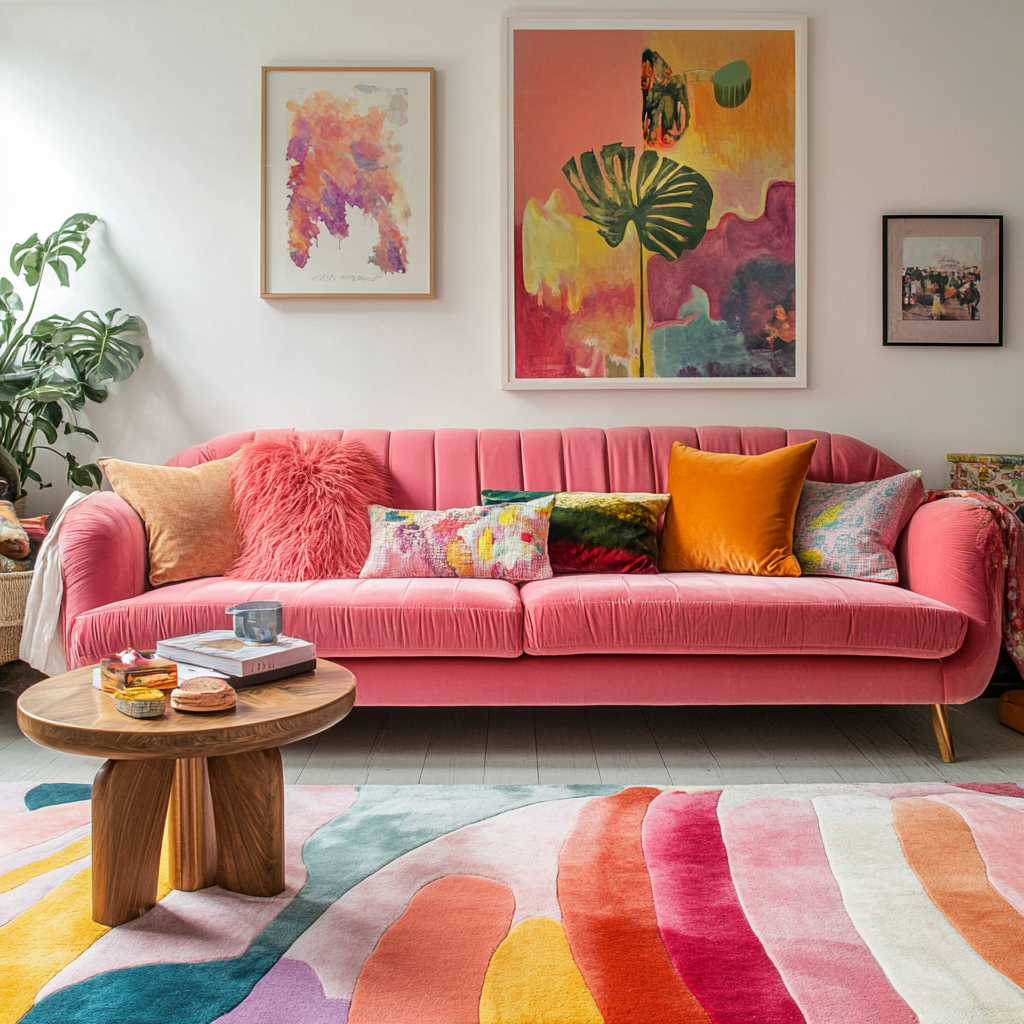Your house can be a chilled retreat, but sometimes the way you style it ends up causing unwanted irritation. Choices in colours, textures, and decorative pieces might unknowingly collect tiny particles that set off sensitivities. Every element, from the soft materials you use to the quirky accents, can gather microscopic enemies. Figuring out how your interior choices affect your breathing is a solid first step toward making your space both cool and comfortable.
Common Culprits
Unique decorative pieces like patterned wall art and cushioned accents can boost your room’s vibe. However, these might also trap minute particles that spark allergies. Irritants often include dust, pollen, and stray pet hair. Keeping up with regular deep cleans and using advanced tools can help manage the indoor environment. In addition, choosing items that are easy to maintain or known for being kind to sensitive noses can also prevent frequent flare-ups.
The Paint Problem
Bold finishes and trendy wall treatments easily brighten up interior spaces, but can also sometimes release harmful chemicals. Many surface coatings let off compounds that directly evaporate into the air. This causes both skin irritation and mild breathing issues. Using alternatives that emit fewer vapors is a smart move. This is especially vital for rooms where you spend a lot of time. Opening windows during updates or switching to eco-friendly products can also help keep the air clean.
Cozy Yet Costly

Plush rugs and soft window hangings add warmth, but can become home to mold spores. These fabric-based items are also prone to catching dust mites. This leads to frequent sneezing or watery eyes over time. Regular vacuuming with premium screens or even occasional steam cleaning can reduce build-up. Opting for materials that are easier to wash can also reduce the need for expensive replacements.
Contemporary Surfaces
Engineered wood floors and synthetic countertops offer a sleek look to any home. The downside is that these also give off chemical fumes that irritate the skin and lungs. Improving the airflow during and after renovations can help these emissions fade away quicker. Additionally, opting for products that have been certified for low release is an easy way to keep your environment both stylish and safe.
Botanical Blues
Adding indoor plants is a cool way to liven up any room. However, the moist soil in containers can foster mold growth. This not only affects regular breathing, but can also trigger asthma attacks. Opting for foliage that requires less water and using special, low-allergen potting mixes can cut down on this risk. Keeping the leaves clean and the area around free of dust is also a great way to maintain a fresher atmosphere.
Tidying Conundrums
Cleaning agents are key for a neat space, yet many of these products can spray out chemicals that irritate the throat and eyes. Aerosol products, in particular, can spread tiny irritants all over your room. This immediately makes it harder to breathe freely. Switching to gentler, more natural solutions can make a huge difference. Plus, letting in fresh air while you clean can quickly clear out any lingering residues.
Flooring Faux Pas
The type of flooring you choose directly impacts the number of irritants. While soft coverings feel cozy underfoot, they can harbor mites and dander. Hard surfaces like tile or polished wood are much simpler to wipe down and keep free of debris. If you are into the comfort of plush mats, try opting for low-pile options. Stick to a deep-cleaning schedule with advanced filtering tools. This way, you can enjoy the warmth without the allergens.
Ventilation Vices
Efficient air movement plays a huge role in keeping your indoor space fresh and clean. Systems that circulate and filter indoor spaces can also significantly reduce the presence of microscopic triggers. Regular upkeep in the form of timely mesh swaps, AC repair, and periodic duct cleaning is essential. Investing in appliances with HEPA screens can further help capture miniscule particles that often slip through.
Illumination and Triggers
The sun’s rays not only lighten up indoor spaces, but also help slow down the spread of mold. This holds true because fungus loves damp, shadowy spots. Relying on natural light makes it tougher for these irritants to settle and boosts comfort. Man-made fixtures also play a big role. Old-style bulbs tend to release extra warmth that can create cozy pockets where dust mites and other allergens multiply. Switching over to LEDs can help keep your room cooler and less welcoming for these nuisances..
Endnote
Striking a balance between a stylish space and one that feels truly healthy is totally within reach. By making smart choices, from selecting easy-to-clean decor to tuning up your air systems, you can ward off hidden irritants. These small adjustments not only keep your room looking , but also ensure that every breath you take feels a bit lighter and more comfortable.
0
Related
Read the full article here


